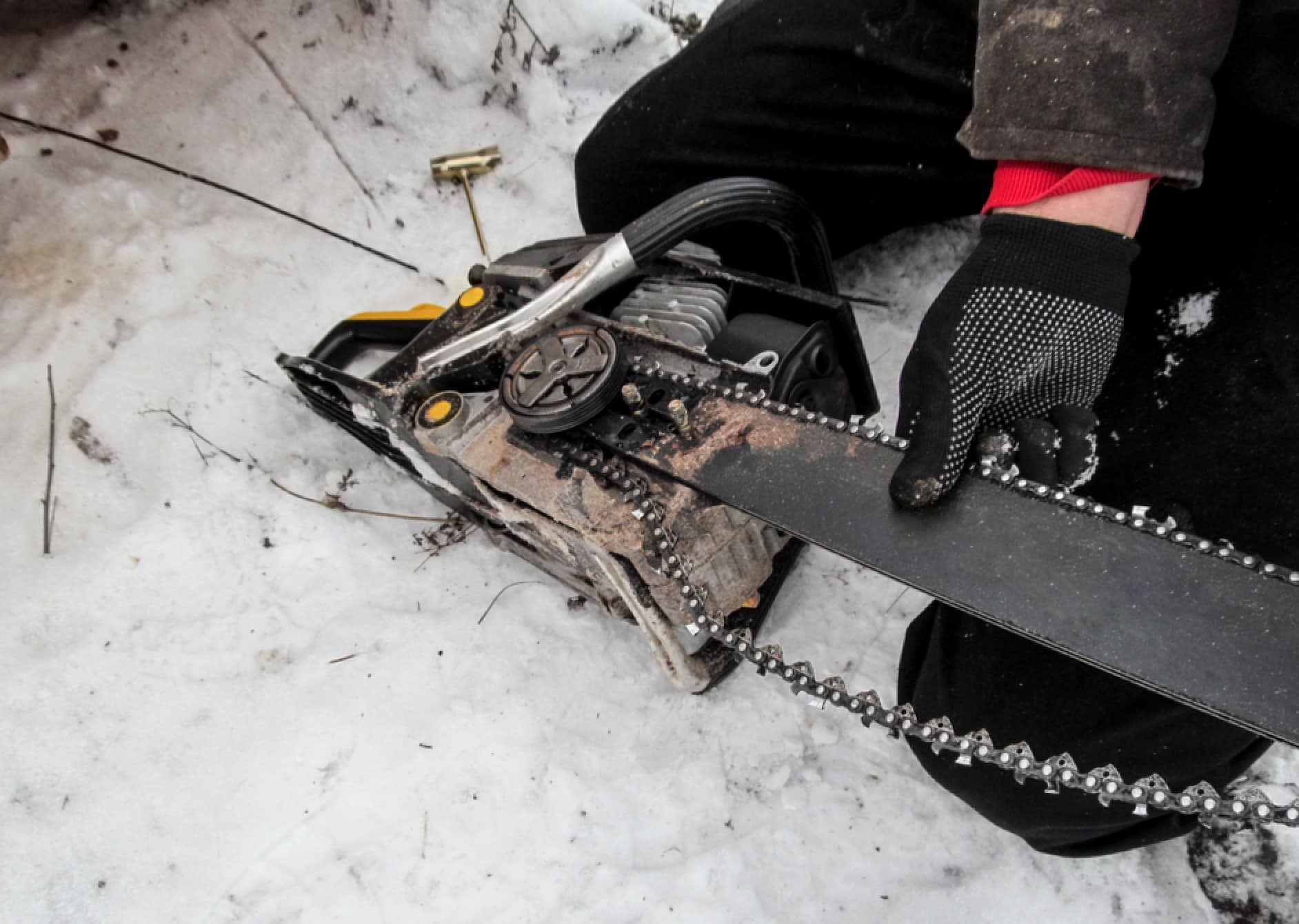Experiencing your chainsaw’s blade coming off can be a truly frustrating and potentially hazardous situation. The rapid motion of the blade makes it imperative to address this issue promptly.
There are several factors that might contribute to the blade detachment, but the most common culprit is improper tensioning.
Why the Chain Keeps Coming Off
- The leading cause behind this issue is often an inadequately tensioned chain.
Prioritize Safety
- Working with a chainsaw sporting a loose chain can pose severe risks. If you’re uncertain about diagnosing the problem, it’s crucial to err on the side of caution.
- Consider seeking professional assistance from a garden shop to address the issue. Your safety should always be the top priority, and no repair is worth risking your life.
By focusing on safety and taking the necessary precautions, you can effectively address the problem of a chain coming off your chainsaw.
Terminology You Should Know
- Cutting Bar: The part of the chainsaw where the blade spins around, making direct contact with the material being cut.
- Sprocket: The component responsible for transmitting power from the motor to the blade, enabling the cutting action.
- Tensioner Screw: A screw used to quickly adjust and tighten a loose blade, ensuring proper tension for safe operation.
- Tension: The ideal condition where the chain should never be pulled more than half an inch away from the saw at any given time. Maintaining correct tension is vital for safe and efficient cutting.
Chain Coming Off Diagnosis
The most common reason that a chain comes off as a lack of tension. This can be due to worn out bars worn out sprockets, a bad bar, or tension that is set wrong
1. Chain Tensioner
As you use your chainsaw, the chain will stretch. That’s why a chainsaw has the ability to adjust chain tension. There will be a screw on the side of the chainsaw. It will probably be labeled. If it isn’t, check the owners manual for the location.
A tensioner works by moving the bar away from the sprocket.
How to Fix
Tighten the tensioner until the chain is snug. Make sure that the screw for the tensioner is not stripped. If it is stripped, it won’t be able to keep the chain tight on the bar, and the chain will jump again.
If the tensioner is not tightening the chain on the bar, it’s time to look and see if the tension gear is broken.
2. Guide Bar
The guide bar is the part of the chainsaw that the blade actually circles. It can wear out. Or, more likely, it has bent.
When the bar rails wear out, there isn’t as much groove for the chain to turn around.
How to Fix
Take the bar off and have a look at it on a flat surface, like a table or garage floor. Once you do so you’ll be able to see if it is bent rather easily. I
nspect it for damage or anywhere that the teeth can jump off at. If it looks worn or bent go ahead and replace it.
There is likely something wrong with the bar if the tensioner is tightening the chain adequately and the
3. Drive sprocket
A chainsaw uses a sprocket like the sprocket on a timing chain, or bicycle. Whether it’s through lots of use, or poor alignment The sprocket can wear out.
If this happens, no matter what you do to get the chain back on it’ll be able to jump off that sprocket again.
How to Fix
Inspect the sprocket. Google the sprocket for your chainsaw and compare it to the one that is already on there. Are the teeth rounded compared to the one in the image?
Is a tooth missing or loose? If so, that is all the evidence you need that the sprocket needs replaced.
The only way to fix this problem is to buy a new sprocket. Replacing one is not that challenging.
Double Check the Tension Adjuster
The first thing that you would want to do is get the chain back on and make sure that the tensioner is set to the proper tension.
There’s really not a whole lot to it. For just about every chainsaw, turning the screw clockwise will tighten it. Counterclockwise will loosen the blade.
You want no more than a half inch of slack when pulling the blade off of the bar. Refer to your owners manual for exactly how much they recommend.
When you get into trouble is when you tighten the tensioner as far as it will go. Once this happens you’ll have to assess what else could be going on with the chainsaw.
Conclusion
Repairing a chainsaw that has a chain that keeps coming off is a pretty easy task for someone who knows what they are doing; it can be incredibly dangerous for someone who does not. We recommend taking it in to be repaired if possible.
